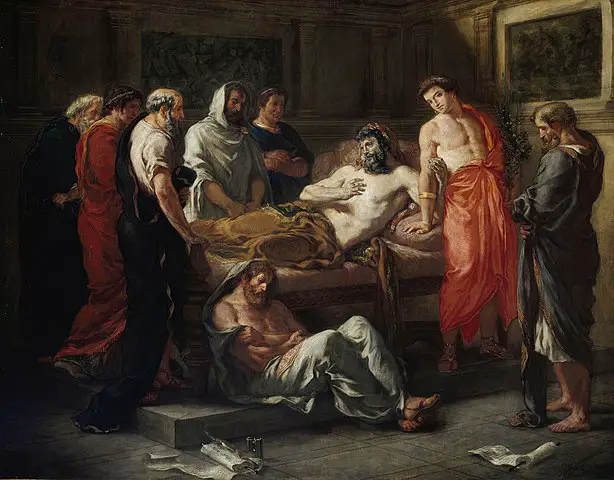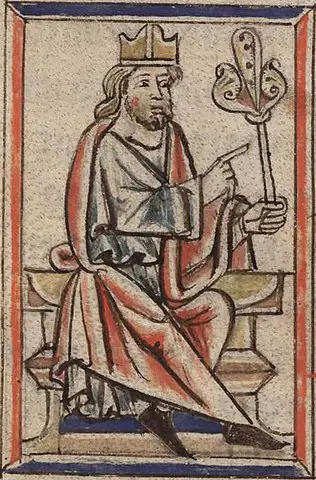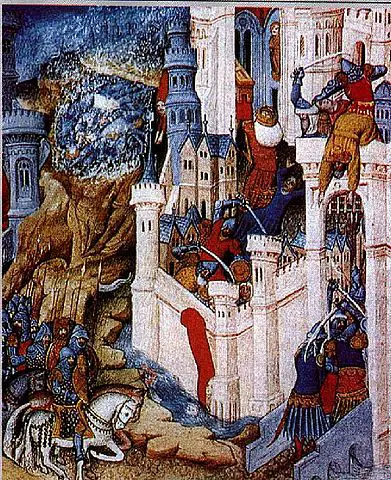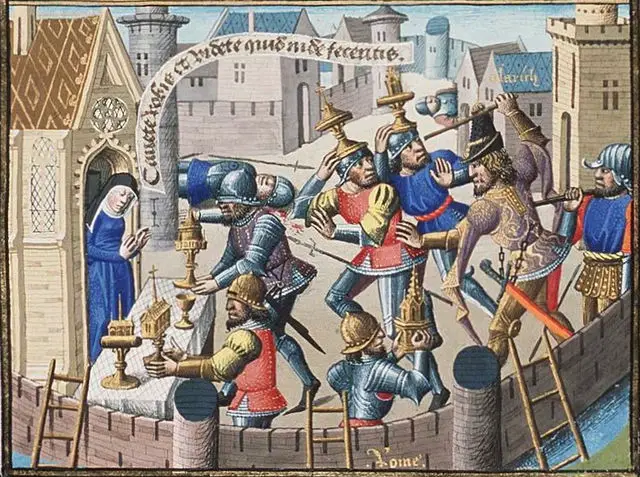
One of the most popular questions that ancient Historians of Rome get surrounds the fall of the Roman Empire. Unfortunately, students are taught in school that the Roman Empire quickly fell after the city of Rome was sacked in 410 AD. However, this is only an elementary response to a very important question of whether or not the Roman Empire did in fact fall in the first place. The purpose of this article is to highlight the two opposing academic theories as to the question of whether or not Rome actually fell in the first place.
Generally speaking, Rome did not ‘fall’ as people would suggest. Instead, it started to break apart into smaller kingdoms of Roman/Barbarian people who inherited the infrastructure of the old Roman Empire. Today historians debate if Rome could be stated as ‘falling’ when instead it simply transitioned from one large Empire into a series of smaller kingdoms. Simply put, the Roman Empire did not fall but rather transitioned from an Empire with an emperor to an amalgamation of states with their own monarchies.
Historians will debate the question of whether or not Rome fell in the first place. There are two major theories that surround this; first that Rome fell apart in the 5th century AD as power was stripped away from it by invading people. Second, Rome never fell in the first place as the invading people who took the land continued to maintain the Roman infrastructure, language, and laws an act which demonstrates that the Roman Empire was still alive but in smaller sections.
Here at The History Ace, I strive to publish the best history articles on the internet. If in the end, you enjoyed this article then consider subscribing to the free newsletter and sharing around the web. Ever share helps me help others interact with our history.
Theory 1: Rome Never Really Fell but Rather Transitioned From an Empire Into Several Kingdoms

Did Rome Fall? Well, most historians today would say the first theory is that instead of falling Rome simply transitioned from an empire into a series of smaller kingdoms. This would be correct to say by today’s standards.
When the western Roman Empire fell in the 5th century the people of the city of Rome would have seen a large change from 410-499 AD. In 410 AD the Visigothic King Alaric I conquered the city of Rome, the first invading army to do so in nearly 800 years! This was a massive culture shock to the people of the city of Rome but by this point, the people living throughout the Roman Empire would have barely noticed anything.
The reason is because for nearly 3 centuries before the ‘fall’ of Rome, the imperial household of the Roma Emperor was starting to lose its central power authority. This central authority allowed the Roman Emperor to install a bureaucracy that controlled the culture, economy, and military of the Roman Empire.
There are a million reasons why this central bureaucracy was starting to fail going into the 4th century AD. Inflation, a rise in outside religions, and a reliance of the Roman Empire on provincial armies instead of legions all contributed towards the ‘fall’ of the Roman Empire. However, what is important to remember is that while this fall of central bureaucracy was happening the power of the provinces around the Empire was growing. Provinces such as Hispania, Gallia, Italia, and Britannia all started to grow in independence while retaining their Roman infrastructure.
Once the city of Rome was conquered in 410 AD each of these provinces continued to operate as normal. They had their own armies, money, and were self-sufficient. Now they simply did not have an Emperor who by the time of the fall of Rome simply served as a figurehead of state.
Hispania for example continued to operate with the same Roman laws and traditions up until the Umayyad conquest of Hispania nearly 300 years later. The provinces of Germania and Brittania continued to refine their own versions of Roman law and customs well into the late medieval era.
As such the first theory of if Rome fell or not is that the Roman Empire did not fall but rather transitioned from a state of central power under an Emperor into a state with several smaller kingdoms which operated with many of the same customs and traditions. Simply put, Rome did not fall or collapse but simply changed.
Theory 2: Rome Collapsed In 410 AD With The Fall of the Western Roman Empire

The second theory regarding the question if Rome did indeed fall is that the Roman Empire collapsed quickly after the fall of Rome in 410 AD.
Starting in 408 AD the Visigothic King Alaric I began to siege the city of Rome. Rome at this point had no defenders and relied upon the very military that was now attempting to sack it. For nearly two centuries the legions of Rome had become replaced with auxiliary armies.
Rome at first was not sacked but had to pay 35,000 pounds of gold and silver to prevent Alaric and his men from sacking the city. At this point the Roman Emperor Honorius was simply a figurehead and Rome held virtually no power to prevent another attack by Alaric.
In 410 AD the city of Rome finally fell to another invasion by Alaric however at this point Alaric and his men sacked the city and destroyed many of the old monuments.
For a long time, this watershed moment in history was what we call the ‘fall of Rome.’ This theory of when Rome fell has dominated history since Edward Gibbon published his widely influential monograph The History of the Decline and Fall of the Roman Empire 1781.
Today this theory of Rome falling in one giant stroke has lost favor among historians. That being said there are still some merits to this theory. First, the sack of Rome marks the end of the power of the city of Rome. After this point, the Roman senate and people would never regain their lost power. Second, after the sack of Rome in 410 the Roman legions would crumble and never again retain their status as field armies.
So Did the Roman Empire Actually ‘Fall’ or Did It Transform?

In 476 AD the last Roman Emperor Romulus Augustulus was forcibly deposed by the Germanic King Odoacer. What started in 410 AD and concluded in 476 AD was now complete, the Roman Empire was no more.
However, if we define the Roman Empire as just the Emperor of Rome then yes the Roman Empire did fall in 476 AD. However, the Roman Empire was far more than just a single person or emperor. In reality, each of the barbarian kingdoms which came out of the decline of the Roman Empire inherited Roman customs and traditions.
Latin continued to be spoken, the aqueducts and baths were still used, a culture of painting and rhetoric still flourished, and standing armies and minted coins continued to exist. Because of this the proper answer to “did the Roman Empire fall” is that no it did not fall, rather it simply transformed from the Roman Empire into the Kingdoms of early medieval Europe.
So if somebody asks you if Rome ever did fall, simply ask how we define the Roman Empire; is it a single Emperor or the entier population of people who used Roman infrastructure, law, and customs? Because if we define Rome as the latter then we can confidently say that Rome did not fall but rather transitioned.
Conclusion
There you have it; everything you will ever need to know to answer the question of whether or not the Roman Empire fell.
The study of the late western Roman Empire is a fascinating subject. Not much research has been done on the Empire between the 4th and 5th centuries. During this time historians have found amazing things and any potential student of history will find a wealth of information dealing with this time period.
I hope you enjoyed this article. Here at The History Ace, I strive to publish the best history articles on the internet. If you enjoyed this article then consider subscribing to the free newsletter and sharing around the web.
Further, you can check out some of the other articles below.
-
Did The Roman Empire Really Fall? The Two Answers Explained

Did the Roman Empire fall? Well there are two theories out there that answer that question and here are both of them for you.


